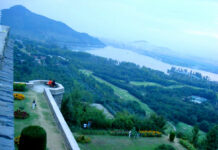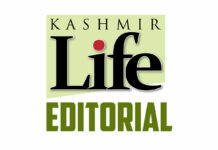After the war clouds started fading from the subcontinent skies and India and Pakistan initiated the process of acquiring new arsenal, Kashmir gradually pushed into a new security blanket in which the tensions are rising on an almost daily basis. The crisis is much visible in south Kashmir where the counter-insurgency grid has almost revived the situation of the1990’s. The ban on Jamaat-e-Islami coupled with the soldiers getting the first right to use the roads has created a situation that many residents think it is safe to stay away for the time being. This all is happening at a time when the electoral process for the Lok Sabha has begun.
The return of a harsh security set-up may help certain political forces to garner some more votes by exploiting the measures in Kashmir, but in the long run, it is going to negatively contribute to the situation back home. This is something that has been tested earlier and the doctrine failed.
The arrest of a young chemistry post-graduate from Awantipora and his subsequent killing in custody has shocked Kashmir, cutting across the political divide. The young boy who was teaching at a local school was arrested repeatedly. If the boy was required for some investigation, it was fundamental to the investigations in the case and would have been a valuable witness. His death in custody, reportedly because of the extreme torture, speaks volumes about why there is a seemingly negative contribution to push the situation to a new disorder.
In the immediate follow up to Rizwan Assad’s death in custody, one of his friends has already announced his joining the rebel ranks. The addition of yet another recruit may not matter for the huge counter-insurgency grid but it means a lot for a small society that is under stress for situational reasons.
The horrible convoy-attack that led to the killing of more than 46 CRPF personnel in February has put new security set up on the ground. It might be helping the security set-up to manage its movement better but it is creating a pressure cooker situation on the ground as tens of thousands of people including office-goers, school kids and patients have their routines going haywire. For the last two years, there had been a huge time saving as people used the new highway. Now they say they need a lot of time, maybe three to four hours, a distance they would routinely cover in 40 minutes.
The garrisons in most of south Kashmir have gone hyper-active and the main objective seemingly is to disrupt the lives of the commoners.
This all might be serving the purpose of some people in the system but this is no way helping the larger issue of managing the militancy. This will deteriorate the situation further. Perhaps that is what some people within the political class in and outside Jammu and Kashmir want. But that may perhaps be the new doctrine that is ruling the Jammu and Kashmir state.









